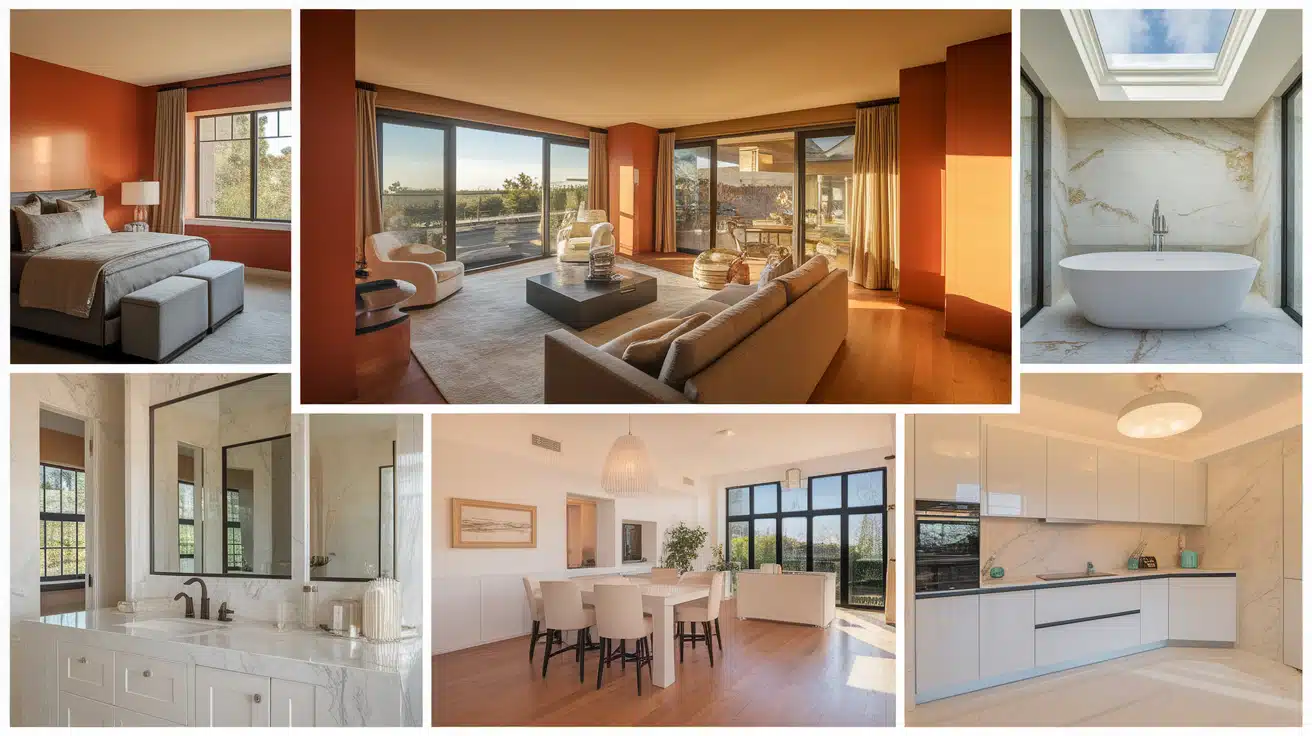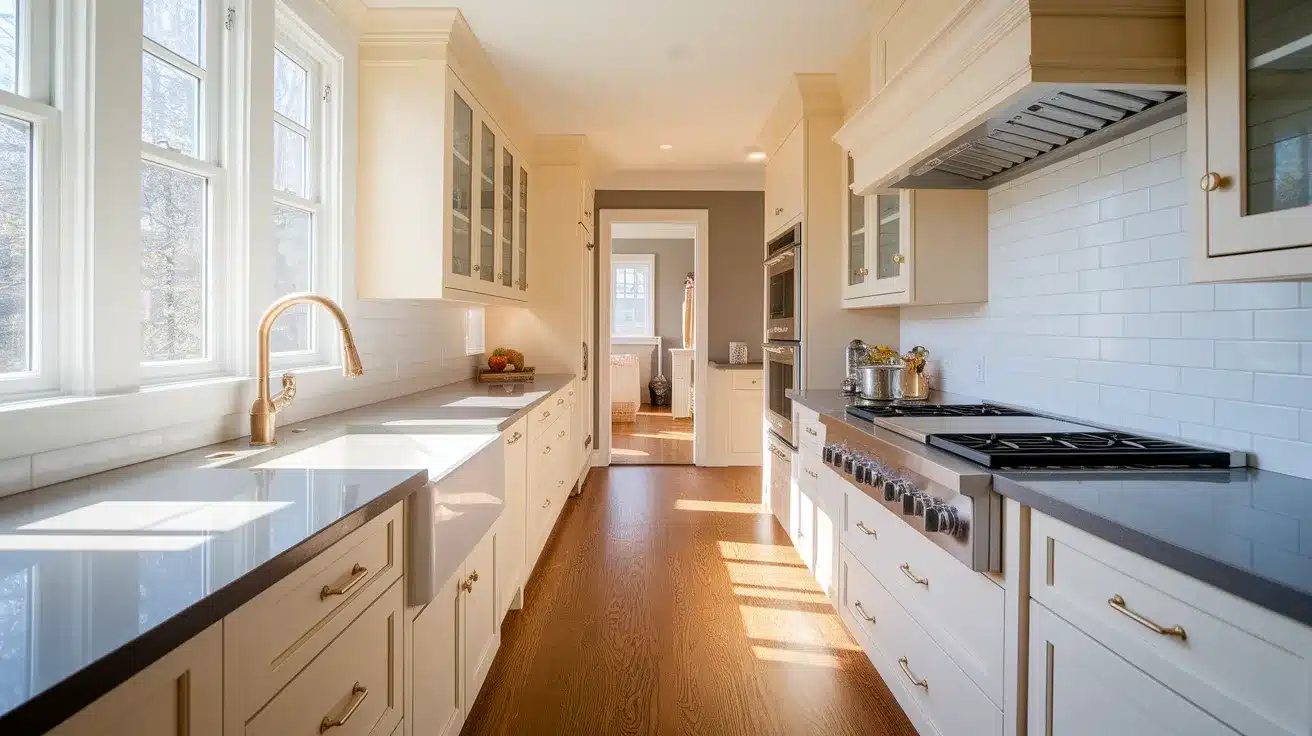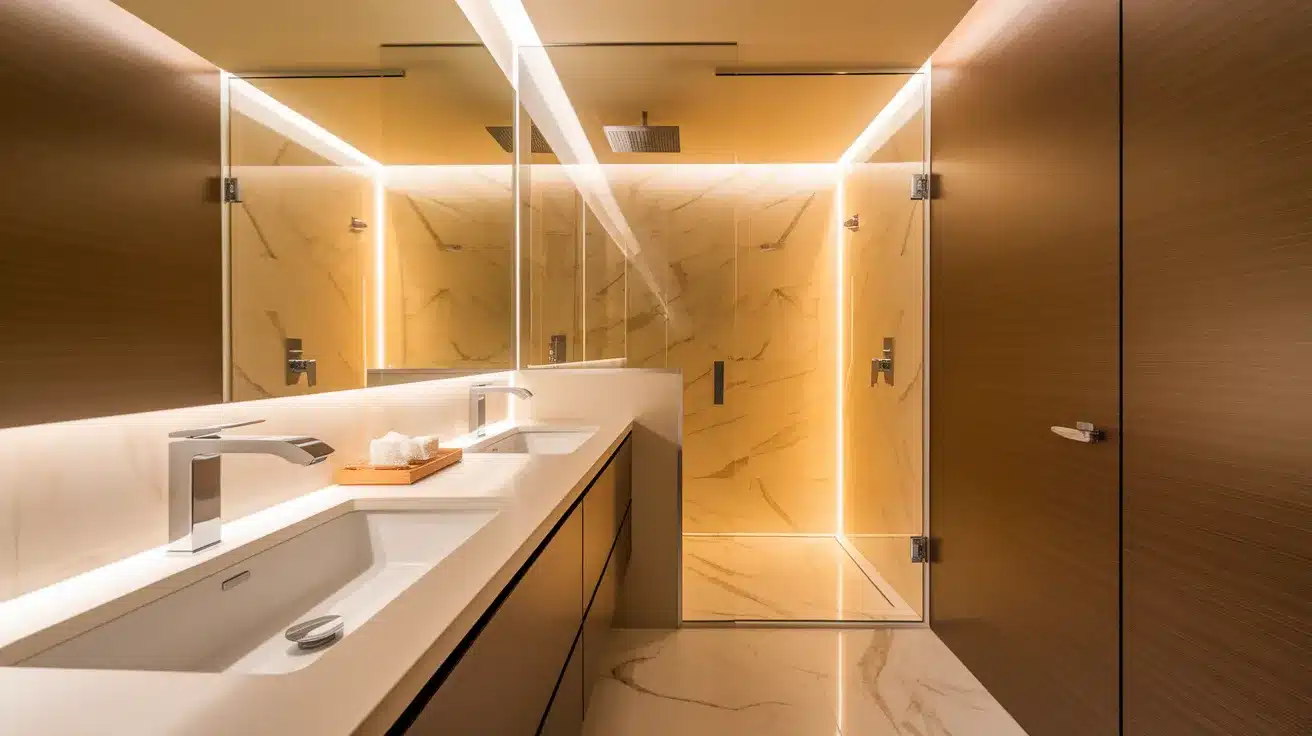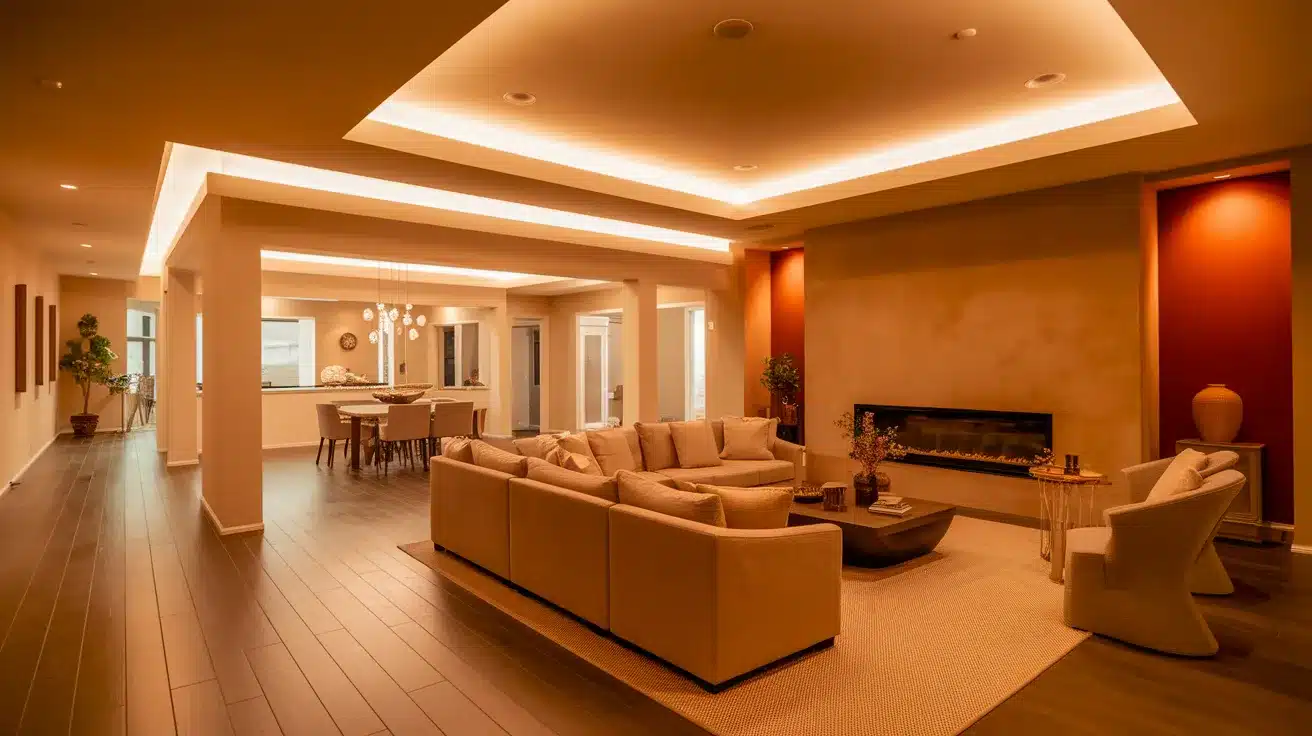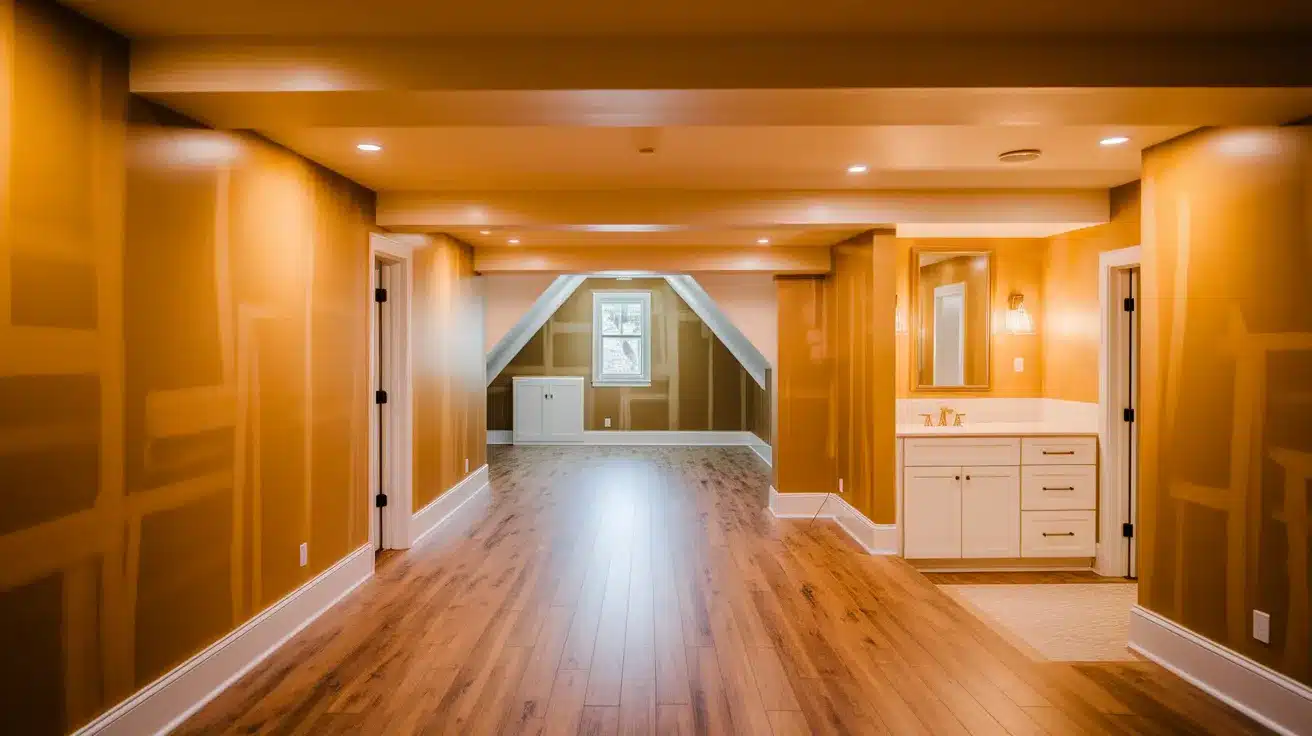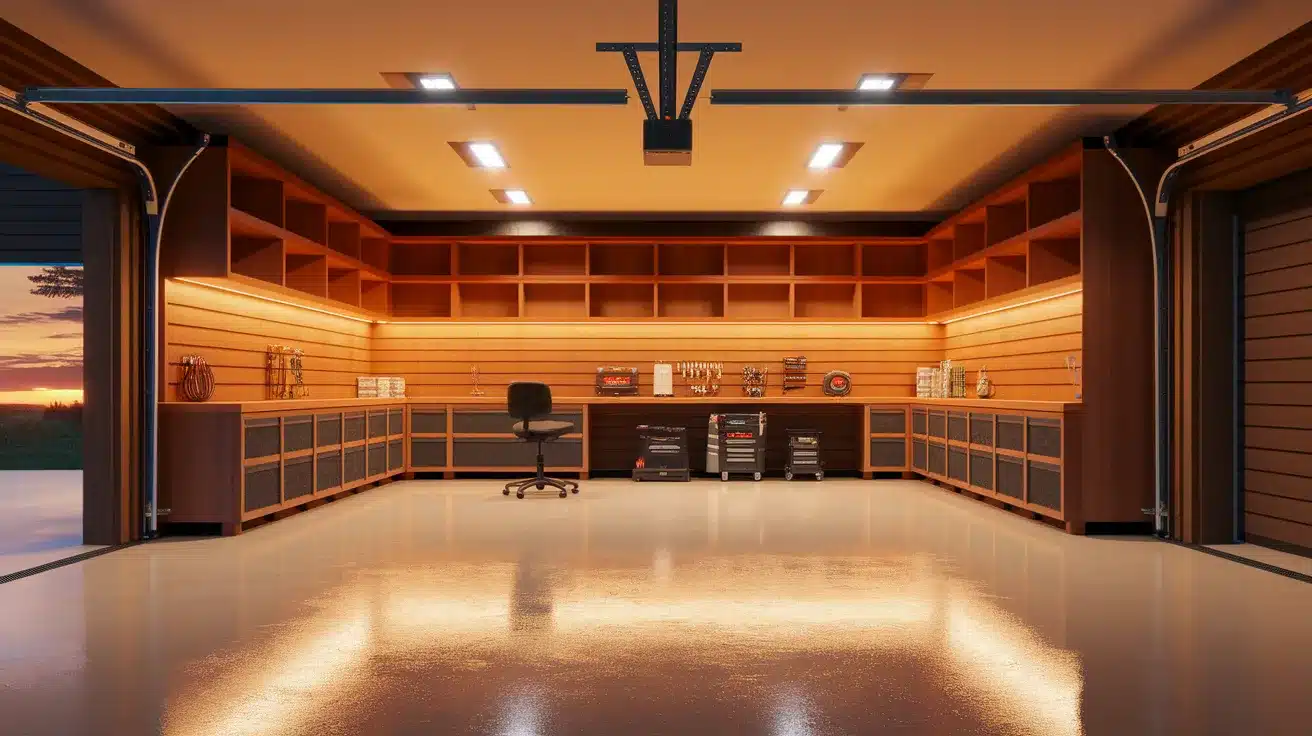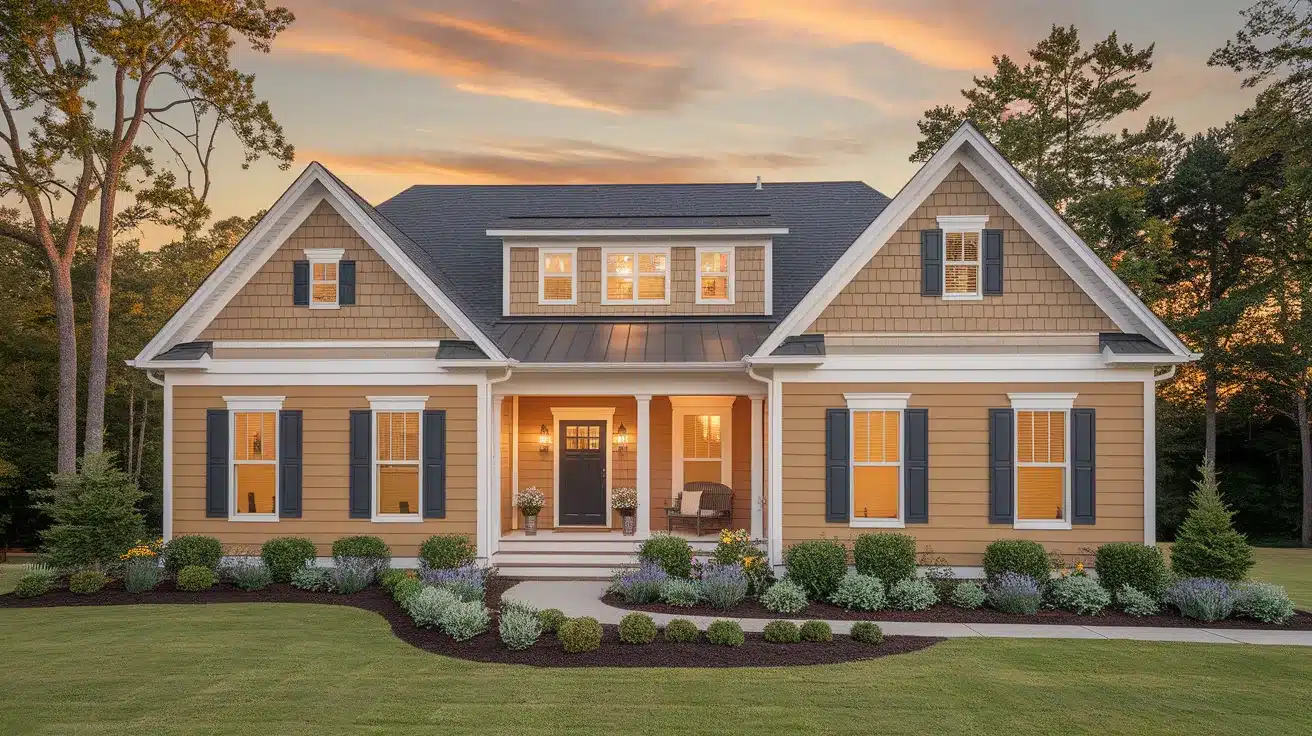Your home no longer suits your life. The kitchen feels cramped during family dinners. The layout stops natural light from flowing through rooms.
Your home office is the dining table. Energy bills continue to rise because outdated windows and insulation can’t keep up. You’re not alone; millions of homeowners face these same daily frustrations.
A well-planned whole-home remodel can solve all these problems simultaneously while increasing your home’s value by 15-20%. You’ll get the open, functional space your family needs without the hassle of moving.
This complete guide covers everything, from room-by-room costs and timelines to hiring contractors and managing the renovation process, providing you with a roadmap to transform your house into your dream home.
What is a Whole Home Remodel?
A whole home remodel is a comprehensive renovation project that updates multiple rooms and systems throughout your entire house.
Unlike single-room updates, this approach changes your home’s layout, functionality, and style simultaneously. Most homeowners opt for whole-home remodels when their house requires major updates or no longer meets their lifestyle needs.
Your project counts as a whole home remodel when you’re updating:
- 50% or more of your home’s square footage
- Multiple major systems (plumbing, electrical, HVAC)
- 3 or more rooms with structural changes
- The entire first floor, including the kitchen and living areas
- Both interior and exterior elements simultaneously
Room-by-Room Home Renovation Strategy
Planning your whole-home remodel, room by room, helps you stay organized and budget-conscious. Each space has different needs and costs. Let’s break down what you can expect for each area of your home.
1. Kitchen Remodel
Your kitchen is the heart of your home. It’s also one of the most expensive rooms to renovate. But the good news? A well-done kitchen remodel can return 70-80% of your investment.
Scope: Cabinets, countertops, appliances, layout reconfiguration, plumbing
Average Cost:
- Minor remodel: $15,000 (paint, hardware, appliances)
- Mid-range renovation: $25,000-$60,000 (new cabinets, counters, flooring)
- Upscale redesign: $75,000+ (custom cabinets, high-end appliances, stone counters)
Tips to Save:
- Reface existing cabinets instead of full replacement
- Choose quartz countertops over granite (easier to maintain)
- Keep the same layout to avoid moving plumbing
- Mix high and low-end materials strategically
2. Bathroom Renovation
Bathrooms pack a lot of function into small spaces. Every square foot counts in these high-traffic areas. Modern bathroom trends focus on spa-like experiences, accessibility features, and water-efficient fixtures.
Scope: Plumbing fixtures, vanities, tiles, lighting, ventilation
Average Cost:
- Basic refresh: $5,000-$10,000 (new fixtures, paint, vanity)
- Full renovation: $10,000-$30,000 per bathroom
- Master suite upgrade: $35,000-$50,000+ (double vanity, walk-in shower, luxury finishes)
Tips to Save:
- Use prefab vanities instead of custom-built-ins
- Choose large-format tiles to reduce labor costs
- Keep existing plumbing locations when possible
- Install a shower-tub combo if you need both
3. Living Room & Family Room
Your living spaces set the tone for your entire home. These rooms get the most daily use and serve multiple purposes, from entertaining guests to family movie nights. Open floor plans remain popular for creating spacious, interconnected living areas.
Scope: Flooring, lighting, fireplace updates, and layout changes
Average Cost:
- Cosmetic updates: $5,000-$8,000 (paint, lighting, furniture)
- Mid-range renovation: $8,000-$25,000 (flooring, built-ins, electrical)
- Major structural changes: $25,000+ (removing walls, adding beams)
Tips to Save:
- Keep your existing layout to avoid structural work
- Refinish hardwood floors instead of replacing them
- Add recessed lighting without moving walls
- Use paint to create accent walls
4. Bedrooms & Closets
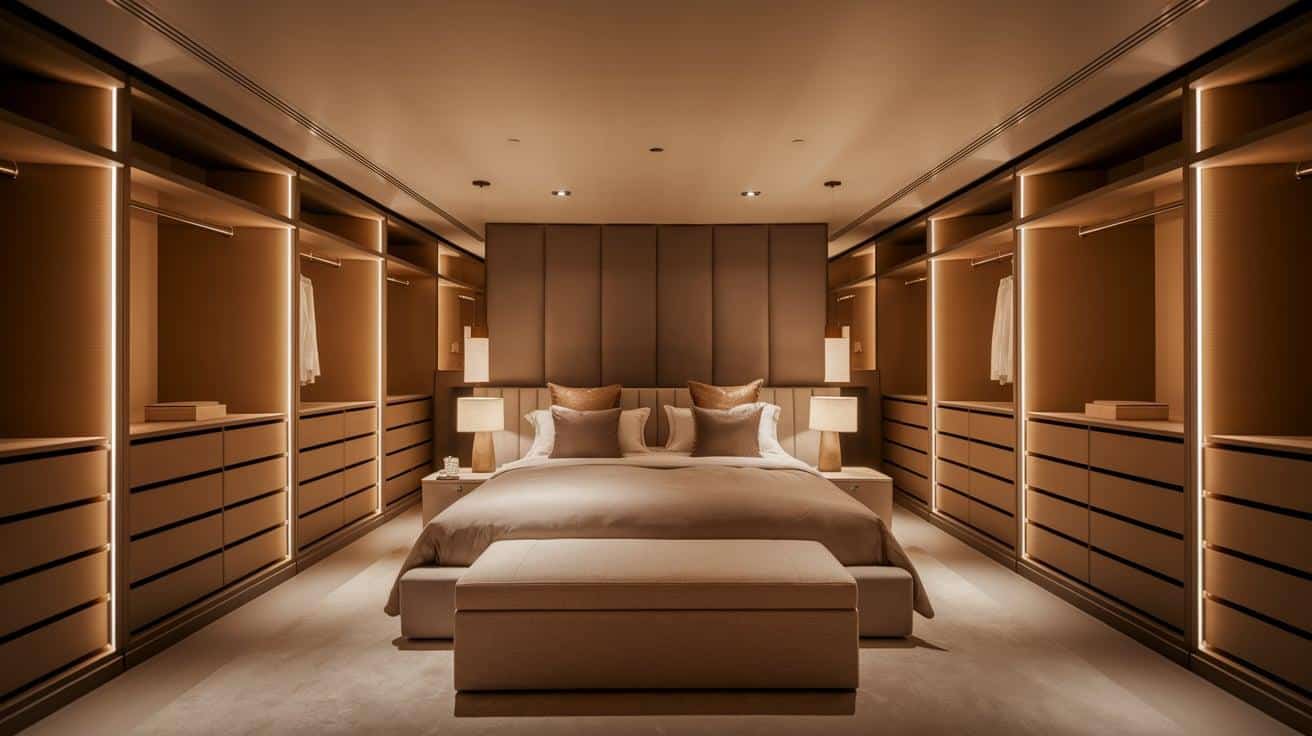
Bedrooms should be peaceful retreats that promote rest and relaxation. Modern bedroom design emphasizes comfort, organization, and personal style. Master bedrooms often receive the most attention, usually featuring en-suite bathrooms and walk-in closets.
Scope: Flooring, closet systems, lighting, smart upgrades
Average Cost:
- Basic refresh: $2,000-$5,000 per room (paint, flooring, fixtures)
- Full renovation: $5,000-$15,000 per bedroom
- Master suite upgrade: $15,000-$25,000+ (en suite bathroom, walk-in closet)
Tips to Save:
- Choose modular closet systems over custom carpentry
- Use luxury vinyl plank instead of hardwood
- Add under-bed storage instead of built-ins
- Focus on one accent wall instead of painting everything
5. Home Office or Flex Spaces
Remote work changed how we use our homes. A dedicated office space boosts productivity and home value. Flex spaces can serve multiple functions, adapting to changing family needs over time.
Scope: Built-ins, acoustics, ergonomic features
Average Cost:
- Basic setup: $1,500-$3,000 (desk, chair, lighting)
- Mid-range office: $3,000-$8,000 (built-ins, flooring, electrical)
- Professional suite: $8,000-$15,000+ (soundproofing, custom millwork)
Tips to Save:
- Convert existing spaces like guest rooms or basement corners
- Use modular furniture instead of custom-built-ins
- Add task lighting instead of overhead fixtures
- Install a barn door for privacy without losing floor space
6. Basement & Attic Conversions
Unused spaces offer huge potential for extra living areas. These projects require more planning but create valuable square footage. Proper moisture control and insulation are critical for comfortable year-round use.
Scope: Insulation, drywall, HVAC, flooring, electrical, bathrooms
Average Cost:
- Basic finishing: $20,000-$30,000 (drywall, flooring, basic electrical)
- Full conversion: $30,000-$60,000 (bathroom, kitchen, separate entrance)
- Luxury suite: $60,000-$100,000+ (high-end finishes, full apartment setup)
- Basement apartments: $80,000-$120,000+ (separate entrance, full kitchen)
Tips to Save:
- Leave existing mechanicals in place when possible
- Avoid digging out basements for extra ceiling height
- Use luxury vinyl plank flooring instead of hardwood
- Install a half-bath instead of a full bathroom
7. Garage Upgrades
Garages do more than store cars. With the right upgrades, they can be transformed into workshops, gyms, or storage areas. Many homeowners want organized, functional spaces that serve multiple purposes while still protecting vehicles.
Scope: Insulation, storage, flooring, workshop, or gym setup
Average Cost:
- Basic organization: $2,000-$7,000 (shelving, flooring, lighting)
- Workshop conversion: $7,000-$15,000 (workbenches, tool storage, electrical)
- Full living conversion: $ 20,000- $ 40,000+ (ADU with bathroom and kitchen)
Tips to Save:
- Use epoxy floor coatings instead of new flooring
- Install wall-mounted storage systems
- Add insulation yourself to save on labor
- Use portable heaters instead of extending the HVAC system
8. Exterior Updates & Curb Appeal
Your home’s exterior makes the first impression. Good curb appeal can increase your home value by 5-10%. Exterior updates also protect your investment by maintaining the structural integrity and weather resistance of your property.
Scope: Siding, windows, roof, landscaping, front porch, paint
Average Cost:
- Paint and landscaping: $5,000-$15,000
- Siding and windows: $15,000-$40,000
- Full exterior makeover: $ 20,000- $ 70,000+
- Roof replacement alone: $10,000-$25,000
- New siding project: $15,000-$40,000
Tips to Save:
- Mix expensive materials with budget options (stone accents with vinyl siding)
- Use composite decking instead of hardwood
- Plant perennials instead of annuals
- Power wash and paint instead of replacing siding
The Remodeling Timeline: What to Expect
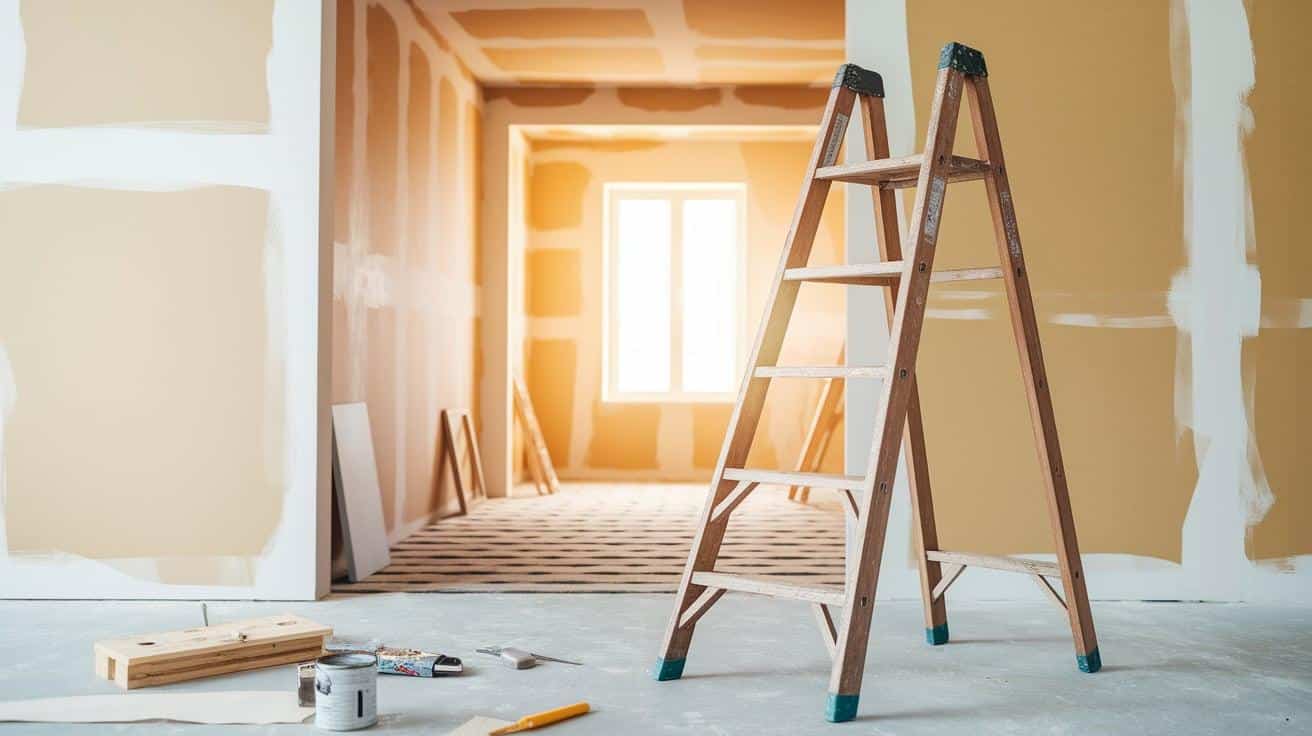
Whole-home remodels typically take 4-6 months from start to finish, although larger projects can extend to 8-12 months. Understanding the timeline helps you plan your life around the construction schedule and avoid unrealistic expectations.
1. Pre-Construction Phase (2-4 weeks)
The pre-construction phase sets the foundation for your entire project. Your contractor finalizes plans, orders materials, and schedules subcontractors. This stage involves obtaining permit approvals, arranging material deliveries, and establishing the job site with necessary safety equipment.
2. Demolition Phase (1-2 weeks)
Demolition removes old fixtures, flooring, and walls to make way for your renovation plans. This messy phase creates dust and noise but moves quickly once started. Contractors disconnect utilities, protect areas not being renovated, and dispose of debris properly.
3. Rough-In Phase (3-6 weeks)
Rough-in work involves installing new electrical, plumbing, and HVAC systems before walls are closed up. This critical phase requires multiple inspections to ensure everything meets code requirements. Contractors install new wiring, move plumbing lines, and update heating systems.
4. Finishing Phase (4-8 weeks)
The finishing phase transforms your space with drywall, flooring, cabinets, and fixtures. This stage shows real progress as the rooms begin to take shape according to your vision. Painters, flooring installers, and cabinet makers work in sequence to complete each room. Custom elements, such as built-ins or specialty tiles, can significantly extend this timeline.
5. Final Inspection and Walkthrough (1 week)
Final inspections ensure all work meets building codes and permit requirements. You’ll do a detailed walkthrough with your contractor to identify any touch-ups or corrections needed. This punch list gets completed before final payment, and you’ll receive all permits and warranty information for your records.
Home Renovation Permits & Regulations
Obtaining the right permits protects you from costly legal issues and ensures your remodel complies with safety standards.
Most whole-home remodels require multiple licenses, and skipping this step can result in fines, project delays, or problems when you sell your home.
Professional contractors handle permit applications for you, but understanding the process helps you stay informed and avoid surprises.
Permit costs typically range from 1% to 3% of your total project budget, but this small investment can prevent major headaches later. Cities and counties have different requirements, so what applies in one area might not work in another.
Standard Permits by Project Type
- Electrical Work Permits: are required for panel upgrades, new circuits, outlet installations, whole-house rewiring, and smart home systems.
- Plumbing Permits: Bathroom relocations, kitchen plumbing moves, water heater replacements, new water lines, and septic modifications.
- Structural Permits: Wall removal or additions, beam installations, foundation work, room extensions, and staircase changes.
- HVAC Permits: Ductwork modifications, furnace installations, ventilation upgrades, gas lines, and fireplace work.
- General Building Permits: Roof replacements, window installations, deck construction, garage conversions, and basement finishing.
Common Home Remodel Mistakes to Avoid
| Mistake | Why It’s a Problem | How to Avoid It |
|---|---|---|
| Skipping permits | May lead to fines or project delays | Always check local code and get permits |
| Underestimating costs | The budget may fall short | Add a 15–20% buffer for surprise expenses |
| Poor planning | Causes delays and waste | Plan layout, materials, and timeline upfront |
| Choosing the cheapest contractor | Quality may suffer | Compare skills, not just price |
| Lack of clear communication | Mistakes and rework can happen | Hold regular check-ins and confirm changes |
Conclusion
A whole home remodel changes more than just your living space – it changes how your family lives, works, and connects every day. From kitchen upgrades that bring families together to home offices that boost productivity, every room plays a part in your home’s new story.
Remember the key steps: define your goals clearly, budget for surprises, hire qualified contractors, and plan for the renovation timeline. Whether you’re spending $50,000 on essential updates or $150,000 on a complete transformation, smart planning ensures you get maximum value from your investment.
Your dream home is within reach. Start by choosing one priority room, get three contractor quotes, and take the first step toward the functional, beautiful space your family deserves.
Ready to begin? Contact local contractors today and bring your renovation vision to life.

